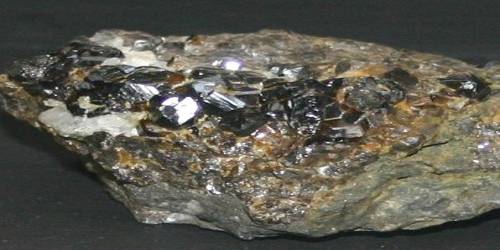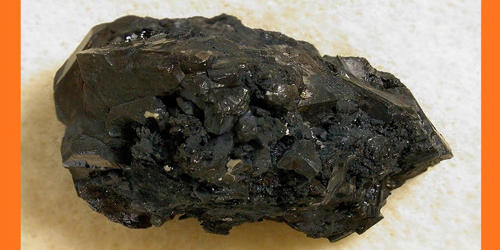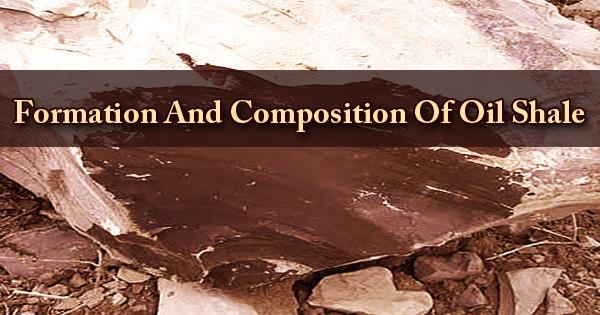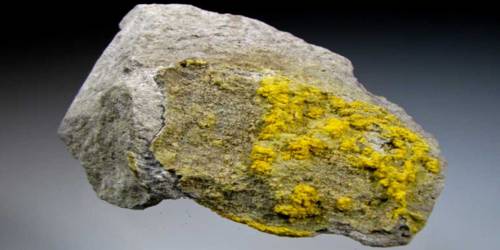Cassiterite is a tin oxide mineral, SnO2. It is a reddish, brownish, or yellowish mineral consisting of tin dioxide. It is the main ore of tin. It is generally opaque, but it is translucent in thin crystals. Its luster and multiple crystal faces produce a desirable gem. It is a black mineral is a member of rutile group and an important ore of tin. It was named after a Greek word ‘kassiteros’ which means tin.
Cassiterite has been the chief tin ore throughout ancient history and remains the most important source of tin today. It is a widespread minor constituent of igneous rocks. The Bolivian veins and the old exhausted workings of Cornwall, England, are concentrated in high-temperature quartz veins and pegmatites associated with granitic intrusives. The veins commonly contain tourmaline, topaz, fluorite, apatite, wolframite, molybdenite, and arsenopyrite.
General Information
- Category: Oxide minerals
- Formula: SnO2
- Crystal system: Tetragonal
- Crystal class: Ditetragonal dipyramidal (4/mmm)
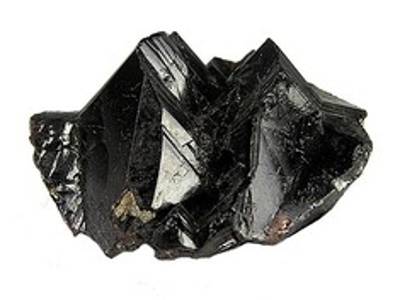
Properties
It is non-fluorescent with a brownish white streak and a perfect cleavage. It is present in different forms including prismatic crystals, massive crystal, and botryoidal forms. The crystals have irregular fracture patterns on its flat surfaces. The relative hardness of the mineral ranges from 6 to 7, and its average density is 6.9 g/cm3.
- Color: Black, brownish black, reddish brown, red, yellow, gray, white; rarely colorless
- Crystal habit: Pyramidic, prismatic, radially fibrous botryoidal crusts and concretionary masses; coarse to finely granular, massive
- Fracture: Subconchoidal to uneven
- Tenacity: Brittle
- Mohs scale hardness: 6–7
- Luster: Adamantine to adamantine metallic, splendent; may be greasy on fractures
- Streak: White to brownish
- Diaphaneity: Transparent when light colored, dark material nearly opaque; commonly zoned
- Specific gravity: 6.98 – 7.1
Occurrence
Cassiterite occurs in granite, rhyolite, granite pegmatite, large alluvial placers, Greisen, medium- to high-temperature hydrothermal veins and metamorphic deposits in rare cases. It is often associated with the minerals like tourmaline, wolframite, muscovite, lepidolite, scheelite, fluorite, molybdenite, bismuth, arsenopyrite, quartz, and topaz.
The mineral occurs extensively in Cornwall as surface deposits on Bodmin Moor, for example, where there are extensive traces of a hydraulic mining method known as streaming. The current major in production comes from placer or alluvial deposits in Malaysia, Thailand, Indonesia, the Maakhir region of Somalia, and Russia.
Information Source;
